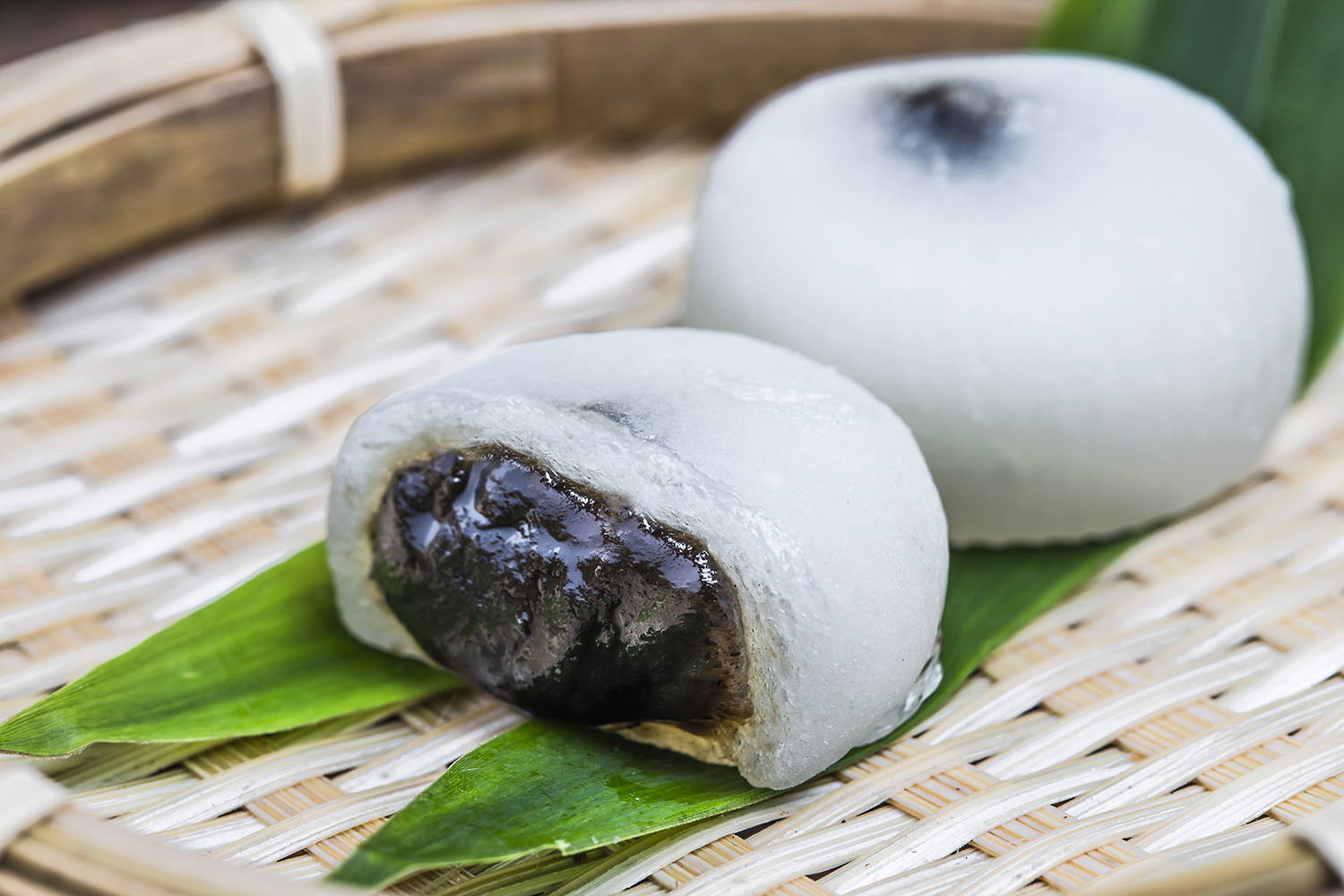

MOCHI – JAPANESE RICE COOKIES
Japanese rice cookies
The small multicolour cookies that slightly resemble marzipan treats in terms of form cannot go unnoticed in any Japanese patisserie. Whether smooth and inconspicuous or intricately decorated, the rice mochi attract the attention and tempt with their unusual appearance. Even though it is their sweet version – served in Japanese houses in the new year season – that is best known outside Japan, everyday rice balls are salty, enjoyed as a starter or side with hot dishes.
Mochi recipe – how to make Japanese mochi?
Mochi are made of rice mass based on glutinous rice (boiled whole or ground to flour), water and – for the dessert version – sugar. At home, they can be made in a steamer, a rice cooker or even a microwave oven, where the rice pap is pre-heated. Achieving the right elasticity requires kneading the dough long and thoroughly. The elastic, sticky mass is used to form balls, slightly resembling Polish knedle. Mochi owe their unique hues to the addition of food colouring. Authentic recipes tend to contain powdered matcha or yamoga leaves, which give the cookies and interesting greenish shade.
What filling to choose for mochi?
Sweet mochi are typically stuffed with the anko paste – an ingredient of many Japanese treats. The traditional cream is made of red adzuki bean with an addition of sugar or honey. Daifuku, meaning “great luck,” is a special version of the rice balls – with a strawberry in the middle, so the name of the dessert is probably self-explanatory. In more modern, Europeanised versions, mochi are stuffed with chocolate, chocolate cream, or even ice cream. They are often rolled in the goma black sesame or in the kinako soya powder. Once formed, the cookies are ready to eat. They are put in separate paper cups so that they do not get stuck together. The savoury version of mochi is served sauté – with no filling or additional sprinkles.
Mochitsuki – sweet New Year
Even though dessert mochi can be found in Japanese shops and patisseries on a daily basis, their popularity peaks in the new year season. This is the time of mochitsuki – the ceremony of traditional “rice pounding.” The rice needed to make the dough is soaked once day before the celebration. In the morning, after being put in a special basket, it is steam-boiled for about 45 minutes.
Soft rice is pounded using mortar, usually made of wood, stone or concrete, and a wooden hammer – kine. It is usually a job for two – one person hits the rice mass with the hammer, while the other one stirs it in the mortar with a damp hand. The activities are often accompanied by rhythmic shouts. The show continues until the texture of the mass is homogeneous and shiny. Then it is rolled in flour, split into parts and moulded into traditional treats. The new year’s kagami-mochi consist of two flattened balls of different sizes, one placed on top of the other. They are to symbolise the succession of generations in a family and bring them good luck in the upcoming year. The symbolic sweets decorate Japanese houses until 11 January, when the already hardened mochi are ceremoniously crushed. The tradition does not allow to cut them as this may bring bad luck upon the whole family.
Sweet danger – how to eat mochi?
It turns out that an innocent superstition can cause dangerous accidents – especially among seniors. This is because it involves not only the dried kagami-mochi but all mochi eaten during the first weeks of January. Freshly prepared cookies are very sticky and hard to swallow. Even though their elasticity and stretchiness is to symbolise long life, attempts to eat them in one piece lead to choking, and in extreme cases even to death. The matter may seem trivial and marginal but specialists every year call for careful consumption of the traditional sweets, preferably after first grounding them. The campaign to prevent risky accidents was also joined by one of mochi manufacturers, who launched cookies enriched in a special enzyme to facilitate swallowing.
Savoury mochi
Even though it is the sweet version of mochi that is more popular outside Japan, most likely due to the special new year’s tradition, the rice balls are usually served in Japan as a salty starter or a side accompanying hot dishes. Savoury mochi are also added to soups, where the sticky balls gently melt, gaining a pleasant creamy texture.
How do mochi taste?
For European lovers of chocolate or sweet creams, the dessert mochi may seem an insipid substitute of “real” sweets. Still, anyone who visits Japan around new year should go to a traditional mochitsuki and try the rice treats with the anko paste filling. But if you want to truly experience authentic Japanese cuisine, you must also taste the basic, savoury version of mochi – the one that is the most popular with the Japanese. Just remember to eat slowly and take small bites! Mochi is serious business!























